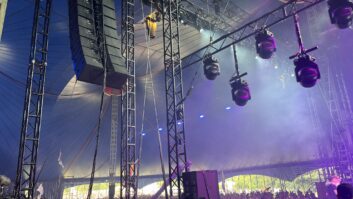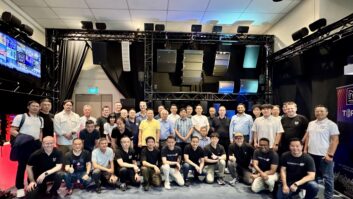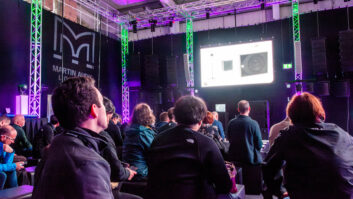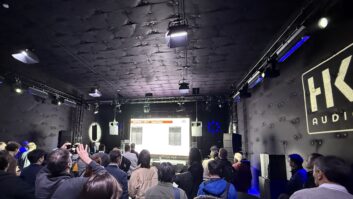The Junction live music venue in Plymouth, UK recently upgraded its ageing sound reinforcement infrastructure with a Martin Audio premium PA.
The installation was carried out by locally-based Martin Audio rental and installation partner Nub Sound, and overseen by its director of operations, Josh Small. He recommended the manufacturer’s powerful triaxial THS 15in point source loudspeaker, combined with SXC118 cardioid subs to provide both the requisite headroom and vocal clarity – far exceeding the capability of the ancient system that it was replacing.
 The long-running venue has been operated by the independent Bedford Breweries for the past decade-plus, but has been trading as The Junction for at least 20 years. It has been systematically upgrading its sound capabilities over the past 18 months, with loudspeakers always planned as the final jewel in the crown. Small: “The venue has transitioned from being a pub that did live music, to a proper live music venue”.
The long-running venue has been operated by the independent Bedford Breweries for the past decade-plus, but has been trading as The Junction for at least 20 years. It has been systematically upgrading its sound capabilities over the past 18 months, with loudspeakers always planned as the final jewel in the crown. Small: “The venue has transitioned from being a pub that did live music, to a proper live music venue”.
House engineer Dom Chiswell said the change of direction had been enforced as a result of the pandemic: “When we came out of Covid, we took a big hit with midweek bar sales; it wasn’t working, so we decided to focus on live shows, but make the experience a lot better for bands prepared to travel all the way down to Devon.” The new booking policy is now geared towards 60 per cent touring bands.
Josh Small’s recommendation was for a Martin Audio L/R THS system, with one enclosure on top of a pair of stacked SXC118 cardioid subs on each side. A pair of delayed FlexPoint FP6, one mounted each side of the room, provide the necessary fills.
Explaining the need for so much headroom, he explained: “The club stages a lot of punk, metal and rock music with loud guitars, so it wasn’t only about reinforcing their low-mid, core energy but getting the vocal above that, which is why the three-way box made so much sense. I’m very comfortable with that decision.”
Processing for the THS and FlexPoint takes place within a dedicated Martin Audio DX0.6 system manager, which feeds the amps. The system was set up with manufacturer presets and tuned with SMAART and pink noise. “All I really had to do was time align the system,” continued Small. “I didn’t need to do any significant EQing at all – we just relied on the natural voicing of the system which was great.”







